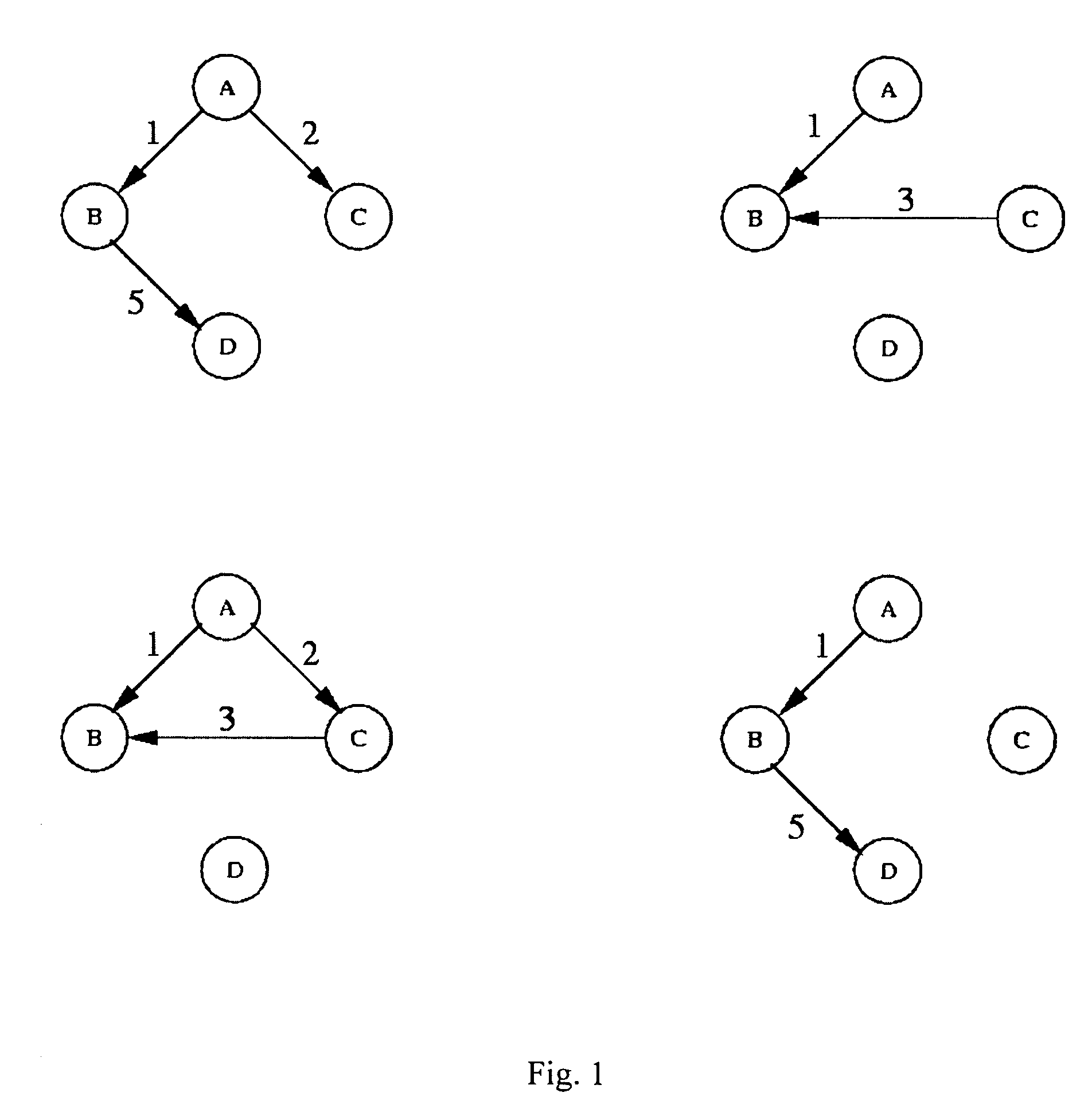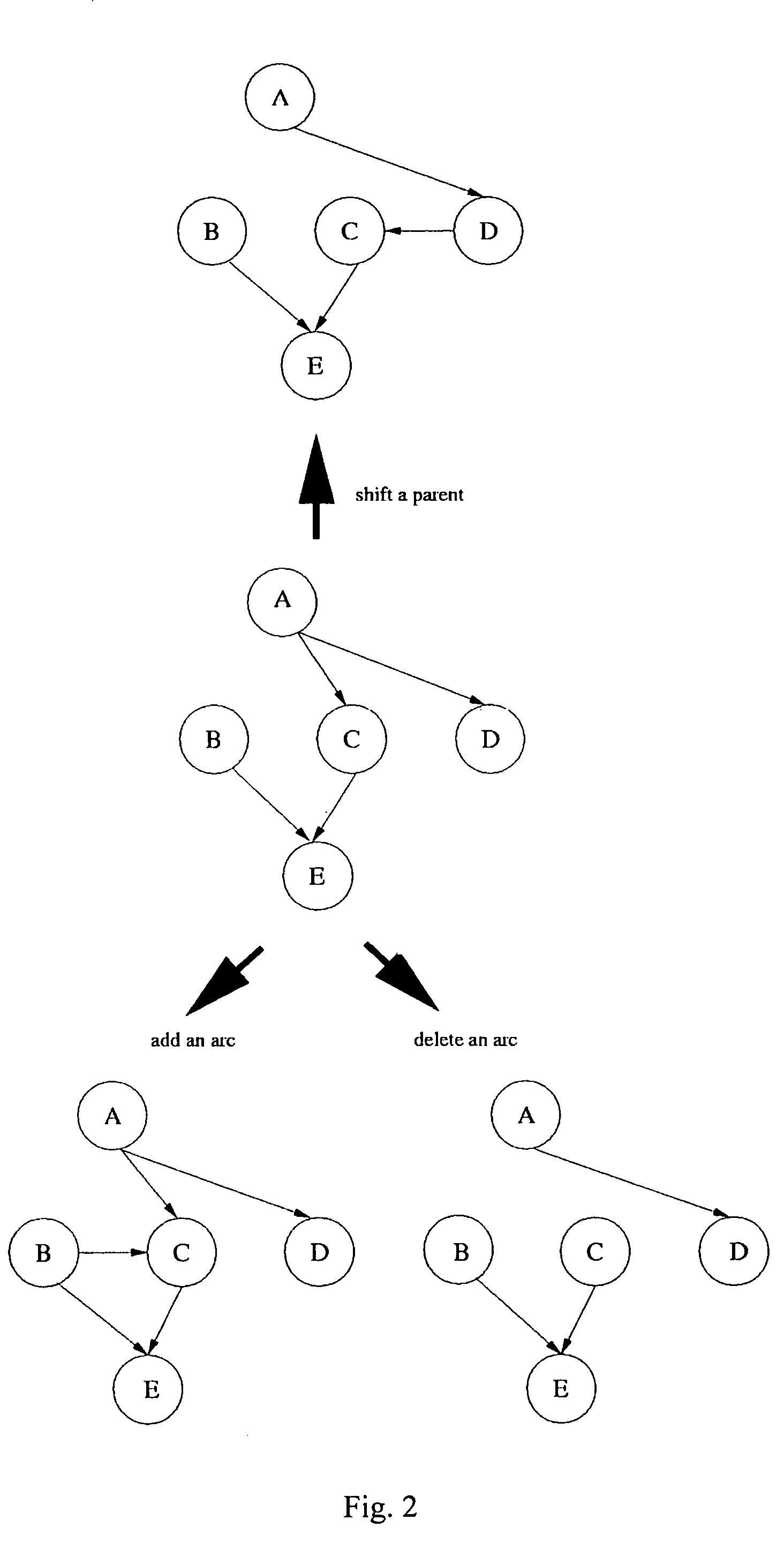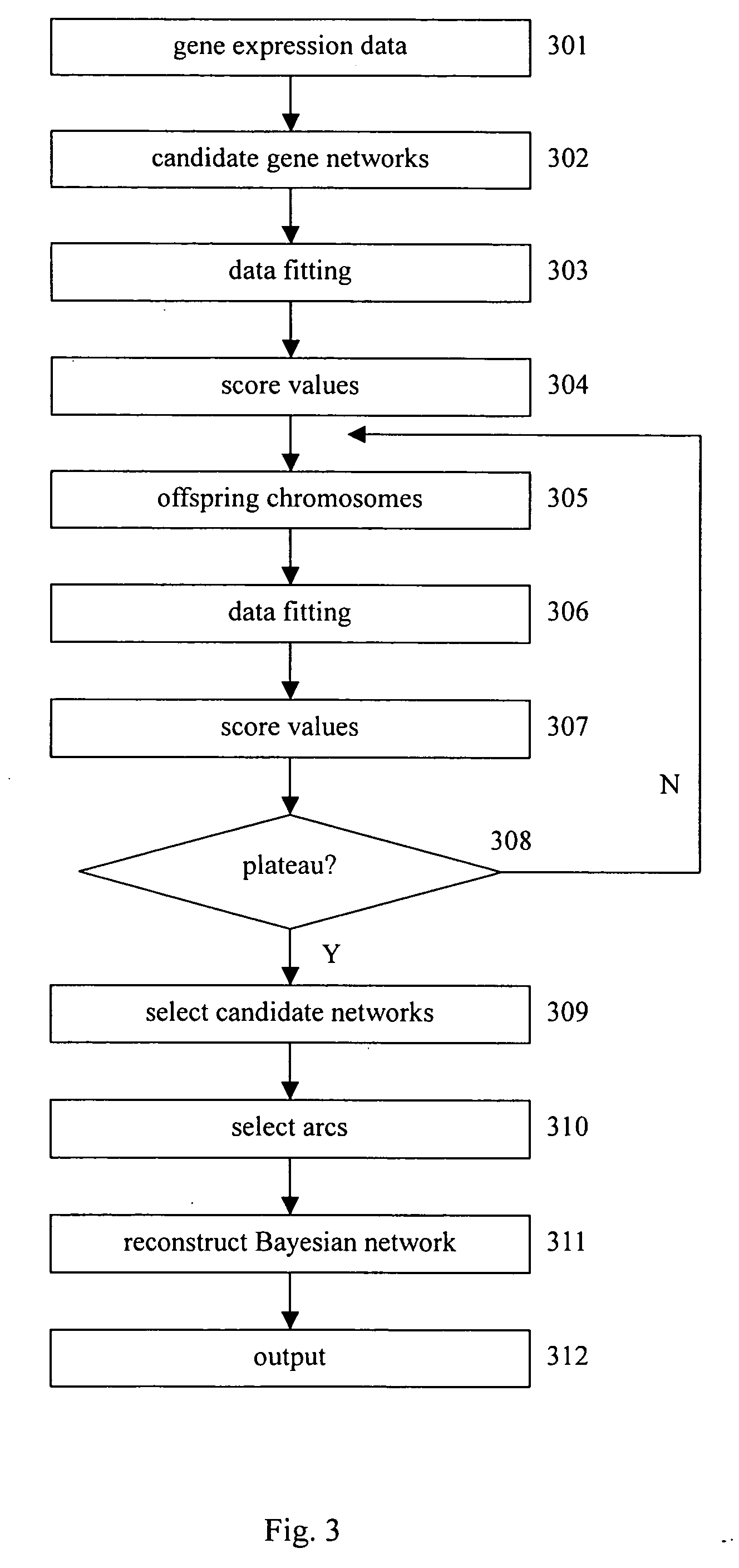Reconstruction of gene networks from time-series microarray data
a gene network and time-series microarray technology, applied in the field of causal relationship analysis using timeseries data, can solve the problems of poor quality of regulatory relations in databases, and it is difficult to use machine learning to reconstruct gene networks
- Summary
- Abstract
- Description
- Claims
- Application Information
AI Technical Summary
Problems solved by technology
Method used
Image
Examples
Embodiment Construction
[0043] The task of gene network reconstruction is to find the structure, together with the appropriate parameters in it whose joint probability density is maximal. A system to reconstruct the gene regulation network shall provide a function to describe and to estimate the regulatory relations between and among gene expressions.
[0044] Events of gene expression are stochastic. Microarray technology in its infancy incurs substantial noise. Because of the cost, replications in typical microarray experiments remain low. Methodologies to reconstruct gene regulation networks should therefore bear rich statistics and probability semantics. It is found that a graph-based method called Bayesian network (BN), well developed in the filed of uncertainty and artificial intelligence, suits most of the requirements. It is thus possible to use a Bayesian network to reconstruct a gene regulation network.
Bayesian Network (BN)
[0045] A BN consists of nodes and arcs. In using a BN to represent the ge...
PUM
| Property | Measurement | Unit |
|---|---|---|
| time | aaaaa | aaaaa |
| joint probability density | aaaaa | aaaaa |
| probability density | aaaaa | aaaaa |
Abstract
Description
Claims
Application Information
 Login to View More
Login to View More - R&D
- Intellectual Property
- Life Sciences
- Materials
- Tech Scout
- Unparalleled Data Quality
- Higher Quality Content
- 60% Fewer Hallucinations
Browse by: Latest US Patents, China's latest patents, Technical Efficacy Thesaurus, Application Domain, Technology Topic, Popular Technical Reports.
© 2025 PatSnap. All rights reserved.Legal|Privacy policy|Modern Slavery Act Transparency Statement|Sitemap|About US| Contact US: help@patsnap.com



